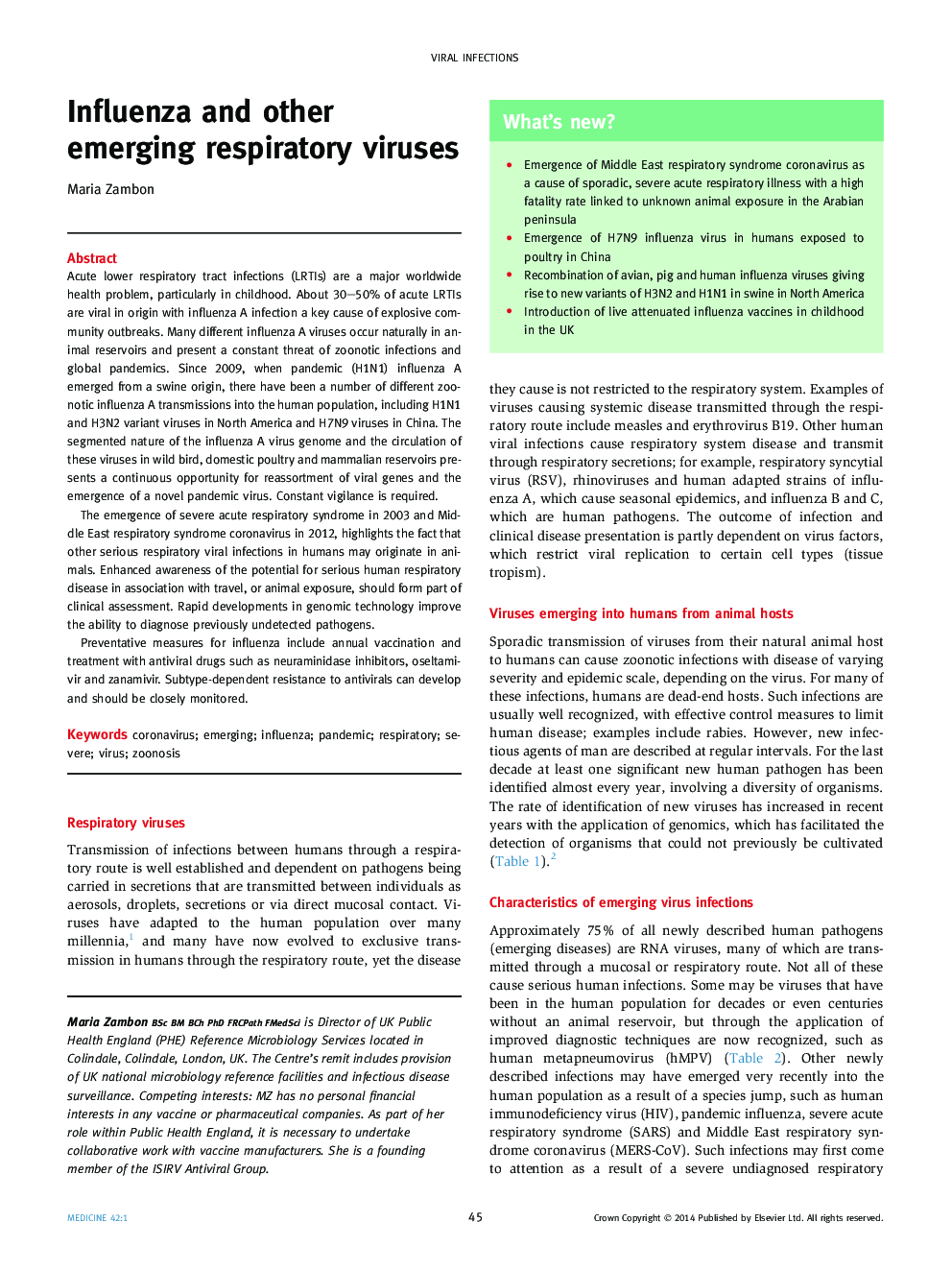| Article ID | Journal | Published Year | Pages | File Type |
|---|---|---|---|---|
| 6152068 | Medicine | 2014 | 7 Pages |
Acute lower respiratory tract infections (LRTIs) are a major worldwide health problem, particularly in childhood. About 30-50% of acute LRTIs are viral in origin with influenza A infection a key cause of explosive community outbreaks. Many different influenza A viruses occur naturally in animal reservoirs and present a constant threat of zoonotic infections and global pandemics. Since 2009, when pandemic (H1N1) influenza A emerged from a swine origin, there have been a number of different zoonotic influenza A transmissions into the human population, including H1N1 and H3N2 variant viruses in North America and H7N9 viruses in China. The segmented nature of the influenza A virus genome and the circulation of these viruses in wild bird, domestic poultry and mammalian reservoirs presents a continuous opportunity for reassortment of viral genes and the emergence of a novel pandemic virus. Constant vigilance is required.The emergence of severe acute respiratory syndrome in 2003 and Middle East respiratory syndrome coronavirus in 2012, highlights the fact that other serious respiratory viral infections in humans may originate in animals. Enhanced awareness of the potential for serious human respiratory disease in association with travel, or animal exposure, should form part of clinical assessment. Rapid developments in genomic technology improve the ability to diagnose previously undetected pathogens.Preventative measures for influenza include annual vaccination and treatment with antiviral drugs such as neuraminidase inhibitors, oseltamivir and zanamivir. Subtype-dependent resistance to antivirals can develop and should be closely monitored.
